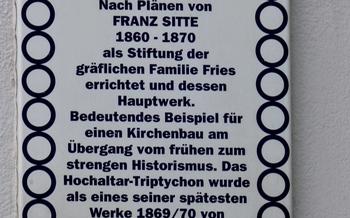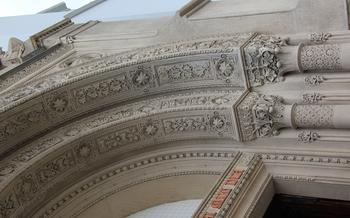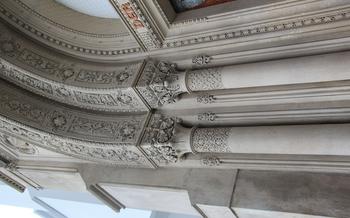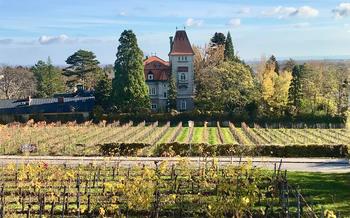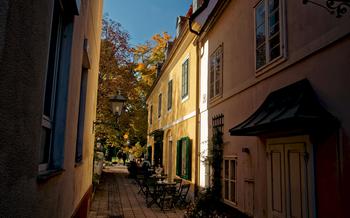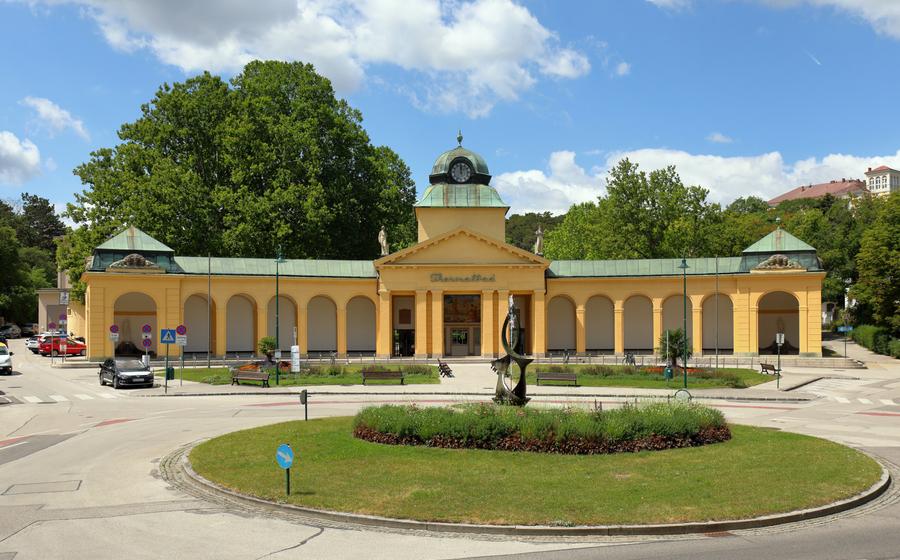
Kaiserbrunn Spring
- The Kaiserbrunn Spring: A Hidden Gem in Bad Vöslau
- Location and Accessibility:
- History and Origins
- Mineral Water Composition:
- Therapeutic Properties
- Cultural Significance
- Local Legends and Folklore
- Visiting the Kaiserbrunn Spring
- Guided Tours and Workshops
- Water Tasting and Sampling
- Nearby Attractions and Activities
- Accommodation and Dining Options
- Accessibility for People with Disabilities
The Kaiserbrunn Spring: A Hidden Gem in Bad Vöslau
Nestled in the heart of the picturesque spa town of Bad Vöslau, Austria, lies a hidden gem known as the Kaiserbrunn Spring. With a history dating back centuries, this natural wonder has been revered for its unique composition of mineral water and its remarkable healing properties. Locals and visitors alike flock to the Kaiserbrunn Spring to experience its therapeutic benefits and immerse themselves in its rich cultural significance.
Legends and folktales surround the discovery of the spring, attributing its miraculous powers to divine intervention. The spring's water, with its distinct mineral profile, has been scientifically analyzed and found to possess therapeutic qualities that have been passed down through generations. Whether it's for drinking cures, external applications, or simply basking in its serene atmosphere, the Kaiserbrunn Spring offers a rejuvenating experience for body, mind, and spirit.
Location and Accessibility:
The Kaiserbrunn Spring is conveniently situated in the heart of Bad Vöslau, a charming spa town located just south of Vienna. To reach the spring, simply head to Kurpark, a beautiful park that serves as a tranquil oasis in the town center. The spring is located within the park, near the Musikpavillon.
Exact Address: Kurpark, 2540 Bad Vöslau, Austria
Public Transportation: Bad Vöslau is well-connected by public transportation. Take the S-Bahn (S45) from Vienna to Bad Vöslau station. From there, it's a short walk to the Kurpark.
Parking Availability: Limited parking is available in the vicinity of the Kurpark. Look for designated parking areas or street parking spaces.
Opening Hours: The Kaiserbrunn Spring is accessible to the public during daylight hours. It is open daily from 6:00 AM to 8:00 PM.
Admission Fees: There is no admission fee to visit the Kaiserbrunn Spring. It is freely accessible to all visitors.
History and Origins
The Kaiserbrunn Spring has a rich and fascinating history that dates back to the Roman era. According to legend, Roman soldiers discovered the spring while exploring the region and were amazed by its healing properties. Over time, the spring gained a reputation for its therapeutic benefits, and people from all over the region flocked to Bad Vöslau to experience its miraculous waters.
In the 16th century, the spring was officially recognized for its medicinal value by the Habsburg monarchy. This led to the development of Bad Vöslau as a spa town, and the Kaiserbrunn Spring became a central part of the town's identity. The spring was enclosed in a stone structure and a drinking hall was built nearby, allowing visitors to drink the water directly from the source.
In the 19th century, Bad Vöslau became a popular destination for wealthy and aristocratic visitors, who came to take the waters and enjoy the town's beautiful surroundings. The Kaiserbrunn Spring continued to be a major attraction, and its fame spread throughout Europe. Today, Bad Vöslau is still a popular spa town, and the Kaiserbrunn Spring remains one of its most iconic landmarks. The spring is a symbol of the town's rich history and its commitment to health and well-being.
Mineral Water Composition:
The Kaiserbrunn Spring is renowned for its unique blend of minerals and trace elements, which gives it exceptional therapeutic properties. Scientific analysis has revealed that the water is rich in bicarbonates, sulfates, calcium, magnesium, potassium, and sodium. These minerals play crucial roles in various bodily functions, including digestion, metabolism, and nerve transmission.
The water from the Kaiserbrunn Spring has been compared to other famous mineral springs in Austria, such as those in Baden and Bad Ischl. While each spring has its own distinct composition, the Kaiserbrunn Spring stands out for its high concentration of bicarbonates and sulfates. These minerals are known to aid digestion, reduce inflammation, and improve skin conditions.
Quality control and safety measures are strictly enforced to ensure that the mineral water from the Kaiserbrunn Spring is safe for consumption. Regular testing is conducted to monitor the water's mineral content and purity. The spring is also protected from contamination by a designated conservation zone and strict regulations governing its use.
Therapeutic Properties
The Kaiserbrunn Spring is renowned for its therapeutic properties and has been used for centuries to treat various ailments. The unique composition of the mineral water, rich in magnesium, calcium, and bicarbonate, has been shown to have several health benefits.
One of the primary uses of the spring water is for drinking cures. The water is believed to aid in digestion and relieve gastrointestinal issues such as heartburn, indigestion, and constipation. It is also effective in treating skin conditions like eczema and psoriasis, thanks to its anti-inflammatory and soothing properties.
The spring water is also beneficial for rheumatic diseases, such as arthritis and gout. The minerals in the water help reduce inflammation and pain, improving joint mobility and flexibility. In addition, the water's high bicarbonate content helps neutralize stomach acid, providing relief from heartburn and indigestion.
The healing properties of the Kaiserbrunn Spring have been supported by scientific research and clinical studies. Several studies have shown that drinking the water can significantly reduce symptoms of digestive disorders and skin conditions. Additionally, the water's anti-inflammatory properties have been shown to be effective in managing rheumatic diseases.
Over the years, countless individuals have experienced the therapeutic benefits of the Kaiserbrunn Spring. Success stories and testimonials abound, with many people reporting significant improvements in their health after undergoing drinking cures or using the water for external applications.
Cultural Significance
The Kaiserbrunn Spring is deeply embedded in the cultural fabric of Bad Vöslau and its spa culture. It serves as a symbol of the town's identity and heritage. The spring has been integrated into local festivals and traditions and is a popular gathering place for both locals and visitors. Literary and artistic works have been inspired by the spring's beauty and healing properties, further solidifying its place in the region's cultural landscape. The spring's significance extends beyond its physical presence, as it has become a symbol of hope, healing, and renewal for the community.
Local Legends and Folklore
The Kaiserbrunn Spring is deeply intertwined with the local culture and folklore of Bad Vöslau. Over the centuries, numerous myths and legends have emerged, adding to the allure and mystique of this natural wonder.
One popular legend tells the tale of a young shepherdess named Maria who discovered the spring while searching for her lost sheep. As she rested by the spring, she noticed a strange glow emanating from the water. Upon tasting it, she was astounded by its refreshing taste and healing properties. Word of Maria's discovery spread throughout the village, and soon people from all over the region flocked to the spring to experience its miraculous powers.
Another legend speaks of a magical creature known as the "Wassermann" (water sprite) who is said to reside in the depths of the spring. According to local folklore, the Wassermann possesses the ability to grant wishes to those who approach him with a pure heart. Visitors to the spring often leave small offerings, such as coins or flowers, in the hopes of catching the Wassermann's attention and receiving his blessings.
These legends and folk tales have been passed down through generations, enriching the cultural heritage of Bad Vöslau and adding to the charm of the Kaiserbrunn Spring. They serve as a reminder of the deep connection between the spring and the local community, and they continue to inspire awe and wonder in visitors from all walks of life.
Visiting the Kaiserbrunn Spring
When visiting the Kaiserbrunn Spring, it is important to observe proper etiquette and guidelines. Visitors should be respectful of the peaceful and serene atmosphere of the spring. Loud noises and disruptive behavior are not appropriate. It is also important to maintain a clean environment by properly disposing of any waste.
To make the most of your visit, plan to spend at least an hour exploring the spring and its surroundings. Take some time to relax and soak in the tranquil atmosphere. Consider bringing a book or a journal to enjoy some quiet reading or reflection. You can also take a leisurely stroll around the spring, admiring the natural beauty of the area.
The Kaiserbrunn Spring is accessible to people with disabilities. There are ramps and elevators that make it easy for wheelchair users to navigate the site. There are also accessible restrooms available.
If you have any questions or need assistance during your visit, do not hesitate to ask a member of the staff. They are there to help you have a pleasant and memorable experience at the Kaiserbrunn Spring.
Guided Tours and Workshops
For a deeper dive into the history, science, and cultural significance of the Kaiserbrunn Spring, guided tours and educational workshops are available to visitors. These tours are led by knowledgeable guides who share fascinating insights and anecdotes about the spring and its unique properties.
Topics covered during the tours may include the geological origins of the spring, the chemical composition of the mineral water, its therapeutic benefits, and the role of the spring in the development of Bad Vöslau as a spa town. Participants also have the opportunity to ask questions and engage in discussions with the guides.
Guided tours are offered on a regular basis, and advance booking is recommended to secure a spot. Group discounts are available for larger groups. Multilingual support is provided for international visitors, ensuring that everyone can fully appreciate the significance of this natural wonder.
Water Tasting and Sampling
Visitors to the Kaiserbrunn Spring have the unique opportunity to taste the mineral water directly from the source. Several fountains and taps are located around the spring, allowing visitors to fill their own bottles or cups and experience the water's distinctive flavor and composition.
The taste of the Kaiserbrunn water is often described as refreshing, slightly salty, and slightly bitter, with a hint of sulfur. The high concentration of minerals, particularly magnesium and calcium, contributes to its unique flavor profile.
It is important to note that the water from the Kaiserbrunn Spring is not treated or filtered, so it retains its natural mineral content. While the water is generally safe to drink, it is advisable to consume it in moderation, especially for individuals with specific health conditions or concerns.
For those interested in comparing the taste of the Kaiserbrunn water with other types of mineral water, there are several tasting rooms and shops in Bad Vöslau that offer a variety of samples. Visitors can learn about the different mineral compositions and health benefits of various waters and make informed choices based on their personal preferences.
Nearby Attractions and Activities
Beyond the Kaiserbrunn Spring, Bad Vöslau and its surroundings offer a wealth of attractions and activities to enhance your visit. Stroll through the picturesque spa gardens, where blooming flowers and manicured lawns create a serene atmosphere. Discover the town's historical charm by visiting the Renaissance-style Rathaus (Town Hall) or the Pfarrkirche (Parish Church), both architectural gems that reflect Bad Vöslau's rich heritage.
For art enthusiasts, the Künstlerhaus (Artists' House) showcases a diverse collection of contemporary artworks, while the Museum der Stadt Bad Vöslau delves into the town's history and traditions. Nature lovers can explore the nearby Naturpark Föhrenberge, a protected area home to diverse flora and fauna, offering scenic hiking trails and panoramic views.
Take a day trip to the neighboring city of Baden, renowned for its thermal springs and elegant architecture. Immerse yourself in the Roman Baths, a historic spa complex dating back to the 1st century AD, and indulge in rejuvenating thermal treatments.
For a taste of adventure, embark on a cycling tour through the picturesque vineyards and rolling hills of the region. Numerous bike paths wind through the countryside, offering stunning vistas and opportunities to sample local wines at charming wineries along the way.
Accommodation and Dining Options
Bad Vöslau offers a range of accommodation options to suit different tastes and budgets. From cozy guesthouses and family-run pensions to modern hotels and luxurious resorts, there's something for every traveler. Many accommodations are located within walking distance of the Kaiserbrunn Spring, allowing for easy access to the healing waters.
When it comes to dining, Bad Vöslau's culinary scene is as diverse as its accommodations. From traditional Austrian taverns serving hearty local dishes to international restaurants offering a global feast, there's something to satisfy every palate. Be sure to try regional specialties such as Wiener Schnitzel, Tafelspitz, and Salzburger Nockerl, all of which pair perfectly with a glass of Austrian wine.
For a truly unique dining experience, head to one of the many restaurants and cafés that overlook the Kaiserbrunn Spring. Enjoy a leisurely meal while admiring the tranquil surroundings and immersing yourself in the spa town's rejuvenating atmosphere.
Accessibility for People with Disabilities
The Kaiserbrunn Spring is committed to providing an inclusive and accessible experience for all visitors, regardless of their abilities. Wheelchair ramps and accessible pathways ensure that everyone can navigate the spring's surroundings with ease. Adapted restrooms and designated parking spaces further enhance the accessibility of the site.
For those with visual impairments, audio guides and tactile maps are available to enhance their exploration of the spring and its history. Additionally, trained staff members are always on hand to provide assistance and guidance to visitors with disabilities, ensuring a smooth and enjoyable visit for everyone.
By prioritizing accessibility, the Kaiserbrunn Spring opens its doors to a diverse range of visitors, allowing everyone to experience the healing and cultural significance of this unique natural wonder.
